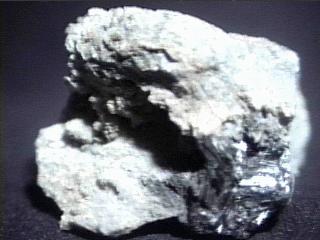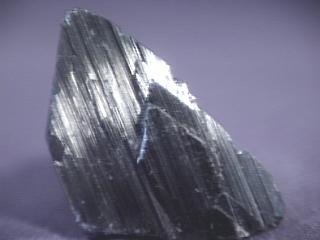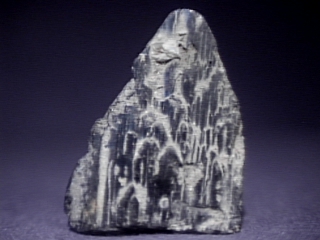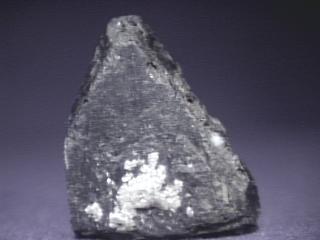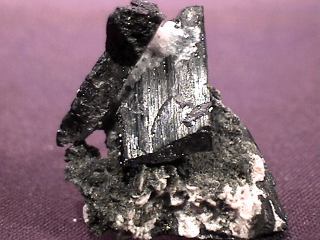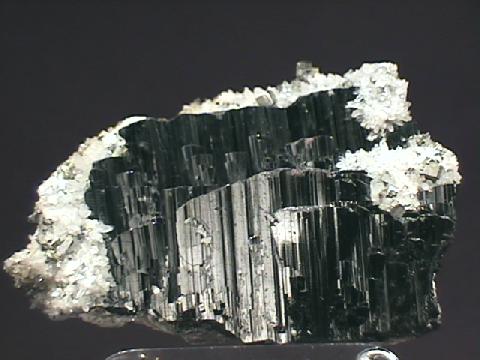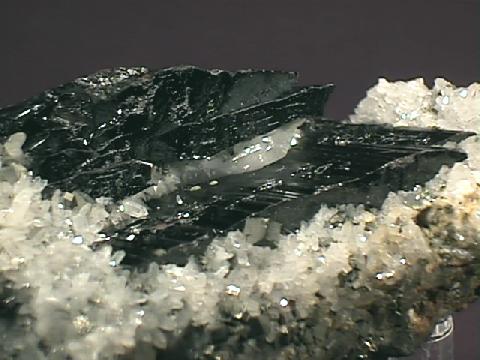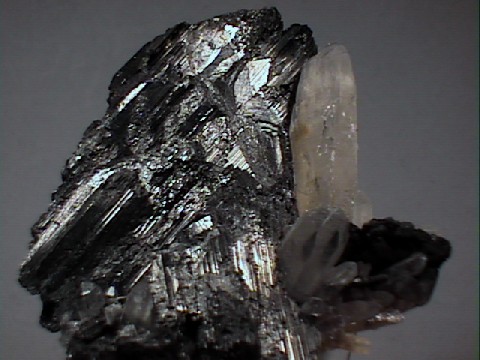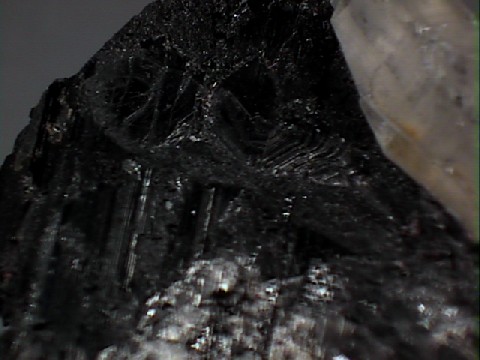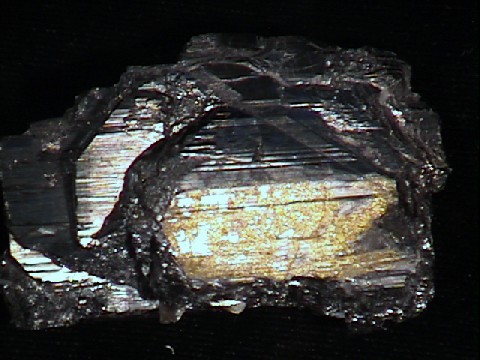 THE MINERAL WOLFRAMITE
THE MINERAL WOLFRAMITE
- Chemistry: (Fe, Mn)WO4, Iron manganese tungstate
- Class: Sulfates
- Subclass: Tungstates
- Uses: an ore of tungsten (an important industrial element) and as a mineral specimen
- Specimens
Wolframite is actually a series between two minerals;
Huebnerite and
Ferberite.
Huebnerite is the Manganese rich end member while ferberite is the iron rich end member.
Wolframite is the name of the series and the name applied to indistinguishable specimens and specimens intermediate between the two end members.
Most specimens found in nature fall within 20 - 80% range of the series and these are termed wolframites.
Only if they are more pure than 80% manganese are they called huebnerite and conversely if they are 80% iron they are called ferberite.
PHYSICAL CHARACTERISTICS:
- Color is Black to grey or brown.
- Luster is submetallic to resinous.
- Transparency crystals are translucent to opaque.
- Crystal System is monoclinic; 2/m
- Crystal Habits include the flat, heavily modified, tabular crystals.
The crystals are elongated along the c axis and are generally flattened in the a axis direction.
Also as columnar aggregates and lamellar masses.
- Cleavage is perfect in one direction parallel to the a and c axes.
- Fracture is uneven.
- Hardness is 4 - 4.5.
- Specific Gravity is approximately 7.0 - 7.5 (heavy even for metallic minerals)
- Streak is brown to black.
- Associated Minerals are quartz, hematite, tourmalines, cassiterite, micas and pyrite.
- Other Characteristics: crystals striated lengthwise.
- Notable Occurrences include Nanling Range, China; southwest and Colorado, USA; Russia; Korea; England and Bolivia.
- Best Field Indicators are crystal habit, color, density, luster and cleavage.
 THE MINERAL WOLFRAMITE
THE MINERAL WOLFRAMITE


